Tobacco pipe shape does far more than define appearance. It shapes the smoking experience, influences comfort, and reflects the smoker's preferences.
Across generations, classic pipe designs have served not only as practical tools but as symbols of craftsmanship and taste.
Each tobacco pipe belongs to one of three core categories: straight, half-bent, or bent. Every variation begins there. Each form delivers its own balance of ease, airflow, and tradition.
Before examining the most recognized pipe shapes, such as the Billiard, Dublin, or Bulldog, it is important to understand what sets straight, half-bent, and bent pipes apart. That foundation explains how each classic design evolved and why each one matters.
Straight, Half-Bent, and Bent Pipes: Three Foundations for Every Shape
View this post on Instagram
Every tobacco pipe shape fits into one of three essential categories. Before choosing a classic pipe style, it helps to know how these basic forms influence comfort, smoke flow, and ease of use.
A straight pipe offers a direct and linear smoke path. Cleaning is simple, airflow remains stable, and condensation is less likely to build up.
For this reason, many first-time smokers find straight pipes the most approachable.
A bent pipe curves downward toward the bowl. It places less weight on the teeth and often feels more balanced in the mouth.
Only Full Bent pipes(those with a pronounced curve)offer hands-free comfort. Most other bent pipes, including shapes like the Rhodesian, still require some hand support.
A half-bent pipe sits between the two. It combines the balance of a bent pipe with the simplicity of a straight one.
One special case, the Woodstock, features a forward-leaning bowl and does not align fully with any of the three categories.
| Pipe Style | Smoke Path | Condensation Risk | Mouth Comfort | Cleaning Ease | Best Fit For |
|---|---|---|---|---|---|
| Straight | Direct, no curve | Low | Moderate | Very easy | Beginners, dry smoke seekers |
| Half-Bent | Gentle, soft curve | Medium | Balanced | Manageable | Balanced daily use |
| Bent | Full downward curve | Higher | High if Full Bent only | More involved | Experienced use, hand-supported |
12 Classic Tobacco Pipe Shapes - Style, Function, and Signature Profiles
Shape defines how a tobacco pipe feels, performs, and ages with use. Each of the twelve classics below carries a distinct identity.
Some offer balance and cool airflow. Others lean into heat, density, or compact handling. All remain timeless.
1. Billiard – The Standard of Balance
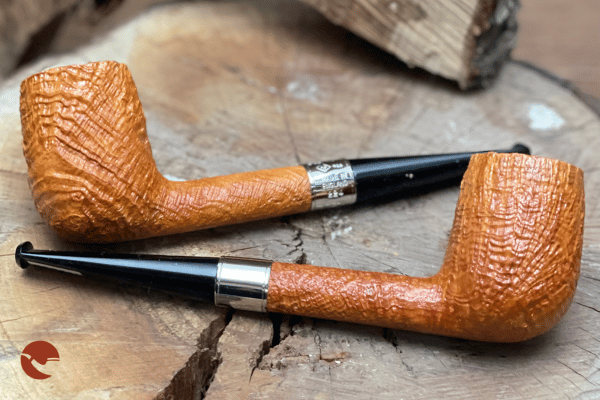
The Billiard is the most popular and well-known shape, perfect for those approaching slow smoking. Its design is based on the perfect balance and proportion between mouthpiece and shank.
By virtue of the angle between head and shank, the smoke passes through a linear path, which prevents condensation, again if the tobacco pipe is smoked correctly.
The cylindrical shape of the head means that the temperature remains constant, which makes this shape very practical and versatile.
Just as with other shapes that follow, there are many variations of the Billiard. One example is the Chubby version and those with a saddle mouthpiece.
2. Bent – Comfort in Every Curve
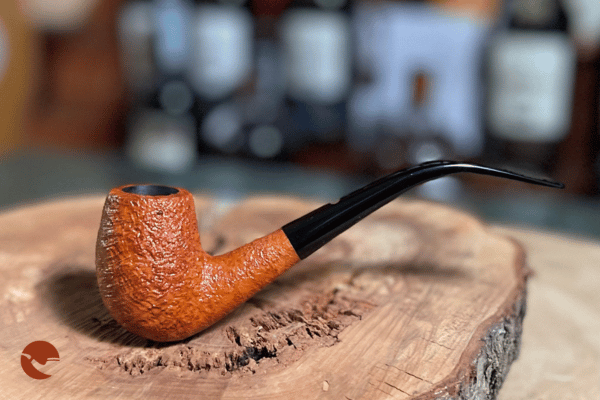
This is the bent tobacco pipe by definition, from which many variations are derived. The advantage of the Bent is in the balance on the teeth, as it prevents them from straining to keep the stove straight.
Of course, this also depends on the weight of the pipe and its distribution throughout the body.
The only disadvantage of the Bent is that it forms condensation more easily because the smoke, as it changes direction, releases heat and cools, creating condensation.
3. Apple – Round, Warm, and Steady
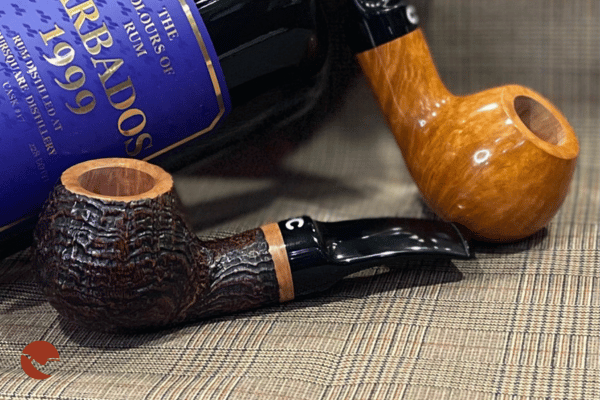
The Apple is a straight shape and has a round head, although Dunhill has given room for many different interpretations.
Unlike the Billiard, its wall gradually enlarges to half a head. As the smoking progresses, the thickness of the wall and, consequently, the insulation by the briar increases, decreasing the overheating of the tobacco pipe.
4. Pot – Broad Bowl, Deep Burn
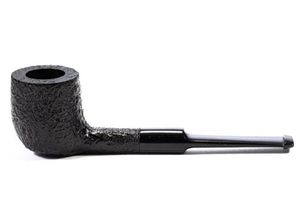
The Pot is similar to the Billiard, with the difference that it has a stockier head and a more extended stove, thus offering more intense smokes.
The Pot is a less suitable shape for novices because it requires better temperature control. The combustion involves a larger surface area of tobacco and is concentrated in the center of the stove.
5. Canadian – Long Lines, Cool Draw
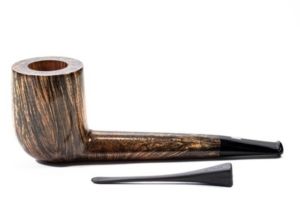
The Canadian has the same head as the Billiard, with the difference that the stove is oval-shaped, offering a cooler smoke.
6. Dublin – Flare and Focused Flavor

The Dublin also looks similar to the Billiard, but features a more flared stove, ending in a cone shape. That inevitably causes the walls to overheat. As the smoke progresses, the tobacco taste becomes more intense due to the narrowing of the stove at the bottom.
As with the Pot, the Dublin requires temperature control, so it is not ideal for beginners.
7. Woodstock – Forward-Tilted and Distinct
The Woodstock has a sleek appearance, with the stove tilted forward. It is well balanced holding it in the mouth, although having the stove tilted can make lighting less immediate.
The stove is tapered, so it heats up rather easily and requires some attention when smoking.
The Woodstock can be considered the most dynamic shape among the classics.
8. Oval – Rare Form, Simple Storage
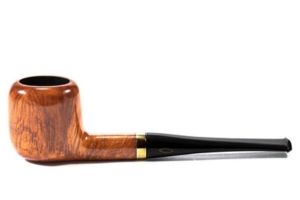
The Oval, despite being a classic shape, is rather rare, because the oval shape diminishes its ease of ignition. In spite of that, it remains a convenient tobacco pipe, easily stored wherever you want.
Lovat – Long Shank, Subtle Strength
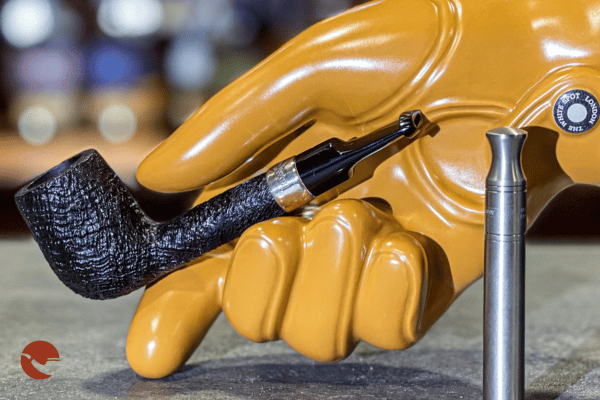
The Lovat is similar to the Canadian, with the difference that the mouthpiece is saddle-shaped and the shank is round. The shank, being longer, absorbs more smoke.
10. Prince – Light, Low, and Elegant
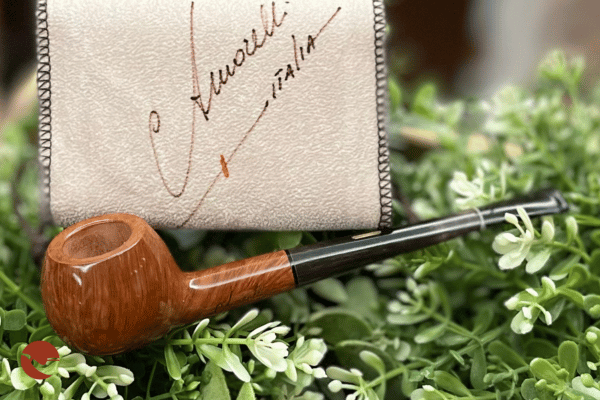
The Prince is a perfect shape for short smokes, by virtue of the small stove, although there are larger sized interpretations. It is one of the most elegant shapes ever.
It is somewhat reminiscent of the Apple, but differs in that it has a wider head and a lower.
11. Bulldog – Angled Bowl, Square Shank
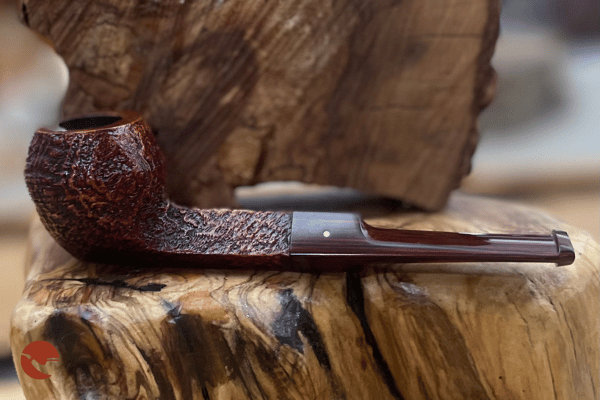
The element that stands out in the Bulldog shape is the square shank, from which it takes its name.
The Bulldog breed has a square face, and this pipe reflects that profile. The head starts flared like a Dublin and proceeds with a flap, which divides it. A very distinctive shape, typically English.
Rhodesian – Compact, Curved, and Firm
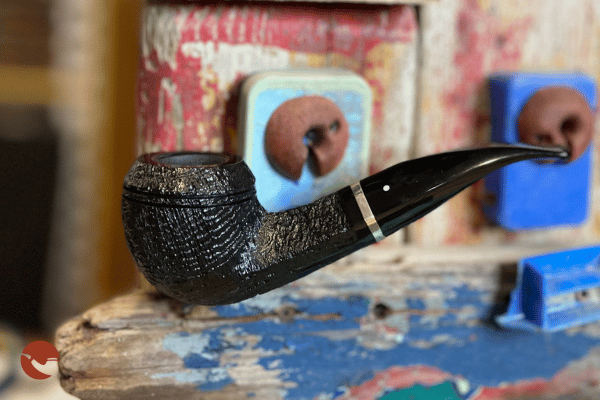
The Rhodesian is reminiscent of the Bulldog, but has one major difference. It can only be half-bent, while straight is only a variation.
The Bulldog has a flared stove, while the Rhodesian has a lower, squat head.
Find the Right Fit Based on Your Preferences
Choosing the right pipe shape depends on more than appearance. Smoking style, experience level, and comfort all play a role. Use the guide below to identify the best match for your needs.
| Preference | Recommended Shapes | Reason |
|---|---|---|
| First-time smoker | Billiard, Apple, Canadian | Easy to clean, balanced draw, steady combustion |
| Flavor-focused experience | Dublin, Pot | Cone or wide bowls refine flavor and shape the burn |
| Cooler smoke | Canadian, Lovat, Churchwarden, Bing Crosby | Long stems or shanks extend the smoke path and reduce temperature |
| Short and fast sessions | Prince, Rhodesian | Compact bowls with quick ignition |
| Hands-free comfort | Full Bent | Deep curve supports balance without hand assistance |
How Pipe Shape Affects Smoke Quality

Every shape influences how the pipe performs. Bowl depth, wall thickness, and stem angle all contribute to the smoking experience.
Airflow and Draw Resistance
Straight pipes offer the most direct airflow. That reduces turbulence and creates a steady draw.
Bent pipes, by contrast, bend the smoke path. The resulting angle can slow the draw and increase the risk of internal buildup.
Heat Control
Wider bowls like those found in Pot or Dublin pipes allow heat to spread. Deeper or cone-shaped bowls intensify heat as tobacco burns lower.
That demands better control during the session. Compact shapes like the Apple hold heat more evenly.
Tobacco Burn Efficiency
Shape affects how tobacco layers and how ash forms. Billiard pipes allow an even burn across the surface.
Dublin shapes concentrate combustion toward the base. Knowing the shape's burn behavior improves the full flavor experience.
Pipe Shape vs Pipe Function: What to Use When?
View this post on Instagram
Some pipe shapes work better in certain settings. Use the guide below to match each form to its best situation.
-
Evening smokes: Pot, Dublin
Deep bowls extend burn time and flavor release. A Dublin provides a longer session if the conical bowl is not too narrow at the end.
-
Outdoors: Bent, Bulldog
These shapes offer a secure grip and a comfortable feel during movement. Their structure can help maintain control when seated or walking, though they are not more resistant to wind by design.
-
Collector display: Woodstock, Rhodesian
Distinct shapes and angles give these pipes a visual edge that collectors prize.
-
Morning quick draw: Prince, Apple
Smaller bowls make for fast, focused sessions that fit early routines.
Common Misconceptions About Pipe Shapes
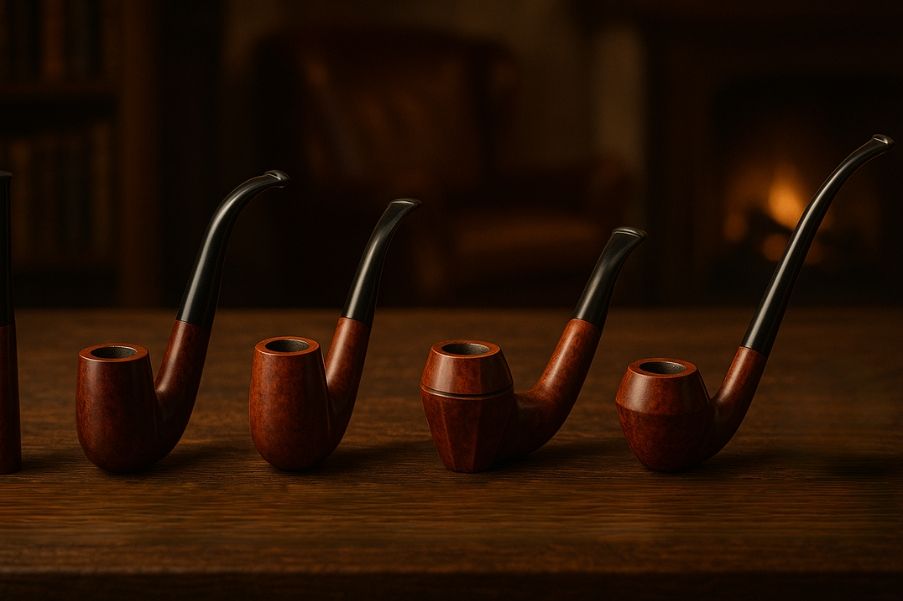
Not all pipe shape advice holds up under experience. Many beliefs come from outdated tips or limited trials. Here are a few to leave behind:
Bigger bowl means better smoke
Larger bowls offer intensity but require more temperature awareness. That said, Pot pipes remain easier to manage due to their wider and shorter bowl, which distributes heat more evenly.
Bent pipes are always more comfortable
Comfort depends on pipe weight, not just the curve. A heavy bent pipe may strain more than a light straight one.
In a full bent pipe, however, more weight often improves balance by shortening the lever arm, which makes it easier to hold in the mouth.
All Billiards perform the same
Chubby Billiards can affect airflow and tend to get warmer due to their shorter shank.
Saddle stem pipes do not change airflow but may slightly influence how the pipe feels in the mouth.
Frequently Asked Questions About Tobacco Pipe Shapes
What is the best pipe shape for beginners?
The Billiard is often the best starting point. Its straight stem allows easy cleaning, the bowl shape supports an even burn, and airflow remains steady. Apple and Canadian pipes also work well due to their balance and simplicity.
Does pipe shape affect taste?
Yes. Shapes like Dublin and Pot influence how tobacco burns. A cone-shaped bowl intensifies flavor as smoke moves downward.
Broader bowls like those in Pot pipes expose more surface area, deepening each draw. Straight shapes maintain consistency and reduce distortion.
Which pipe shape smokes the coolest?
Canadian and Lovat pipes tend to smoke cooler due to their extended shanks. The added length allows more time for smoke to cool before reaching the mouth. Straight Billiards also stay relatively cool if cleaned regularly.
Are bent pipes harder to clean?
They can be. The curved stem complicates access and may trap more moisture. Using flexible pipe cleaners and allowing time for drying after use helps maintain clear airflow.
What shape is best for short smoking sessions?
Prince and Rhodesian shapes fit well into shorter breaks. Their smaller bowls ignite quickly and finish evenly. Both offer a focused session without requiring extended attention or effort.
The Bottom Line
Shape is not a small detail in pipe design. It influences how the pipe feels, how the tobacco burns, and how the smoker connects with the ritual.
Each of the twelve classic forms serves a distinct purpose. Some favor balance and control. Others bring out deeper flavor or suit shorter sessions.
No single shape suits every person. The Billiard remains a trusted choice for beginners.
The Dublin rewards those who manage heat carefully. The Rhodesian stands firm with character, while the Canadian cools each draw with precision.
Selecting the right pipe means more than looking at style. It means choosing a shape that works with how you smoke, how long you prefer to sit, and what kind of experience you value.
To find that fit, browse by shape or speak with our experts. Every smoker starts somewhere. The right shape carries them further.




